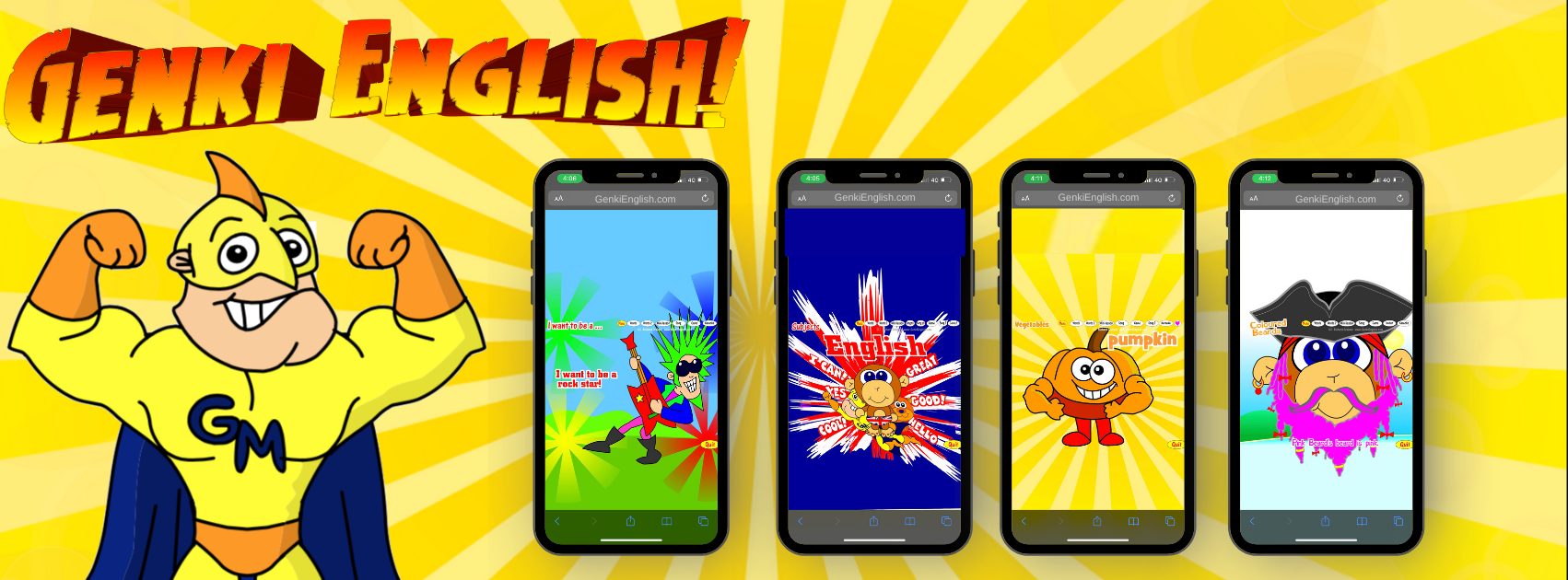About this time of year I get a *lot* of emails along the lines of
My Junior High School (JHS) students are dead! They won’t say anything. They won’t do anything. Help!!!!
 First of all … Don’t worry.
First of all … Don’t worry.
All they are doing is what they have been taught to do in school, which is to basically sit down and be quiet.
They think they’re doing a good job. 🙂
So your job is to let them know that a) it’s OK to speak, relax and have fun and b) it’s actually the best way to learn.
Once they know that this is actually allowed, it starts to make sense to them.
Then you can slowly start to cure their shyness. (Remember shyness is just the degree to which you can communicate. And the cure for shyness is confidence.)
Genki English wise, the trick is to play the songs and especially computer games on the TV in class but *don’t* tell them to sing or move along.
If the volume is loud enough what magically happens is that they start to move and sing on their own.
Especially when they get into the computer games.
(Which I originally wrote for my junior high classes.)
Of course if you’re not using Genki English in your Junior High classes then…. well…. sorry, it’s back to teaching a bunch of zombies!! 8)
Be genki,
Richard
P.S. Here’s how to plug your laptop into the school’s TV:




> All they are doing is what they have been taught to do in school… sit down and be quiet
I don’t know whether to laugh or cringe, but its sadly true. Gotta love the school system =(
I did this lesson with grade 1 students, after teaching food. We sat in a circle and gave each one a food card(picture and word). I demonstrated with a high ability student. I told him to ask me “What have you got”?, I replied “I’ve got a banana”.
Then I asked this question from each one. Next they asked in pairs.
Next lesson was followed, introducing “swap”. (Demonstrate how to swap)
After they answered “I’ve got a banana”, they asked “swap” to the partner, and if the partner agreed, he will say “OK and thank you”.
Mind you some can even say No.
I even wrote down these sentences for them to see and read.
And I thought I am doing something wrong in the classroom!!
I’m not quite teaching junior high students in one of my difficult classes. They are fourth and fifth graders and are making that transition of unruliness and anti-participation in English stuff. Of course, I have to teach the stuff in the book, but I think I’ll start having a section of class devoted to learning/reviewing “easier” English which they still don’t tend to use in or out of class.
Have all the students stand up. Then you tell them they can sit down after they have answered a question. Or, if you prefer, you can have them ask you a question, or another task such as making a statement using some target bit of vocabulary or grammar. I guess this could be called “providing negative motivation,” but it’s certainly one way to get a lot of students to raise their hands when you ask a question. Students naturally want to sit down and don’t want to “stand out” in class, so they are usually eager to answer your question. Needless to say, you don’t need to continue this activity until every student has answered a question. If you have large classes that would be impossible.
Early on when you are first getting to know your students, one elementary school game can be useful for getting a class more comfortable with you and with the other students in class: the “Clapping Game.” Tell the class to choose one item in the room while you wait out in the hall. (I suggest covering your ears so you won’t hear them choosing the item.) Tell them to let you know when they have chosen the item. And tell them to clap when you get close to the item they chose. The closer you get, the louder they are to clap. The farther you get from the item, the clapping should die off. Then when you think you know what the chosen item is, simply ask, “Is it the clock?” “Is it the TV?” Etc. And tell students they should answer with “Yes, it is!” or “No, it isn’t.” I confess I’ve never done this with junior high kids, but elementary school kids loved it! So much so that I’m convinced that at least junior high 1st year students would love it too.
Don’t be afraid to be a bit silly. I generally win students over to my side just because I like to make a silly joke (or face) now and then. Students in Japan are so used to very serious teachers that I think that they appreciate being allowed to laugh and have some fun in class. Of course you don’t want to overdo being silly, but not and then it’s nice to have a laugh! It might be a bit old now, but if you just did the Picotaro bit–just the first and maybe second sentence of it, kids will immediately shout out the “conclusion.” The “bit” you can see on YouTube, but it goes like this: “I have a pen. I have an apple.” (Sound effect of sticking pen into apple) “Apple pen!”
Quiz games using different categories and points. Animals, Sports, Famous People, TV Shows, Music, etc. You make seven or so questions for each category. Ideally with the easiest questions getting the lowest point value. For example, Animals for 10 points: “At Tokyo Disneyland, what animal is Mickey?” I find that students love getting the choice of choosing what category of questions to answer and also the point level. To be honest, it can be hard to know what questions are easy and hard for students, so I sometimes just don’t worry about correlating question difficulty with the number of points. The best advice is probably just to make sure that the students have a reasonable chance of being able to answer your questions.
Songs with strongly “shout-out-able” choruses are effective. Songs like “We Will Rock You” by Queen, “Saturday Night” by the Bay City Rollers are great for getting the students to sing out those “shoutable” choruses!
Another good game for perking up zombie classes requires a CD with some genki music on it, a zippered pouch (which you can get at Daiso for ¥100) into which you put strips of paper with questions written on them, and some soft toy of some sort that can be passed around safely. (That is, something like a sponge ball, something kids can’t hurt each other with.) You give the student sitting in the front desk at the left of the room the bag of questions. You give the students sitting in the front desk at the right of the room the soft toy. You start the music and students are to pass the two items around. They aren’t to throw either item or hang onto one. They must keep passing the two items around until you pause the music. When you pause the music, the two students with the items must stand up (so that everyone can see and hear who is talking). The student with the pouch of questions unzips the pouch and takes out a question and asks it to the student holding the soft toy. The soft toy-holding student answers the question and returns it by saying “How about you?” The question pouch-holding student answers the question. Then that student gives you the question strip and doesn’t put it back into the pouch. Then the two students sit down, and you “unpause” the music and continue. This game usually wakes up students. It’s also a good chance to share music that you love!
Give each student a strip of paper and tell the students to write one (or two or three, if you like) question on it. Give the students no more than 5 minutes to write a question. Then have everyone stand up, walk around, and ask their question(s). When two partners have asked and answered each other’s questions, they then exchange question strips and go to find another talking partner.
I sometimes like to do “20 Questions.” Tell the class to choose a famous person, a person that you are likely to know–in other words, a very famous person. You wait in the hallway while the class chooses the famous person. When they have chosen the famous person, they call you back into the classroom. Then you have twenty questions in which to guess the identity of the famous person. Your questions must all be questions that can be answered with “Yes” or “No.” So, the first questions would be “Is it a man?”
“Is he/she living?” “Is she/he Japanese?” Etc.
Another game that draws in at least some of the students is “Guess the Sentence.” You choose some sentence that students have studied in their textbook. Then you write blanks on the board to indicate the letters in each word, leaving larger spaces to indicate spaces between words. You write the alphabet on the bottom of the board. Then you can divide the class into two or three teams. The first team chooses a letter. If that letter is in the sentence, you write in the letter wherever it appears in the sentence. Teams get one point for each time the letter appears in the sentence. Make sure to cross out the letter in the alphabet at the bottom of the board so students can see which letters have been chosen. After that, the team gets 10 seconds to guess the whole sentence. If they can guess it, they get however many points you want to give them for winning. If they can’t guess the sentence, the next team chooses another letter, and the same procedure as above continues. Some students really get into this game!
I hope those ideas help.